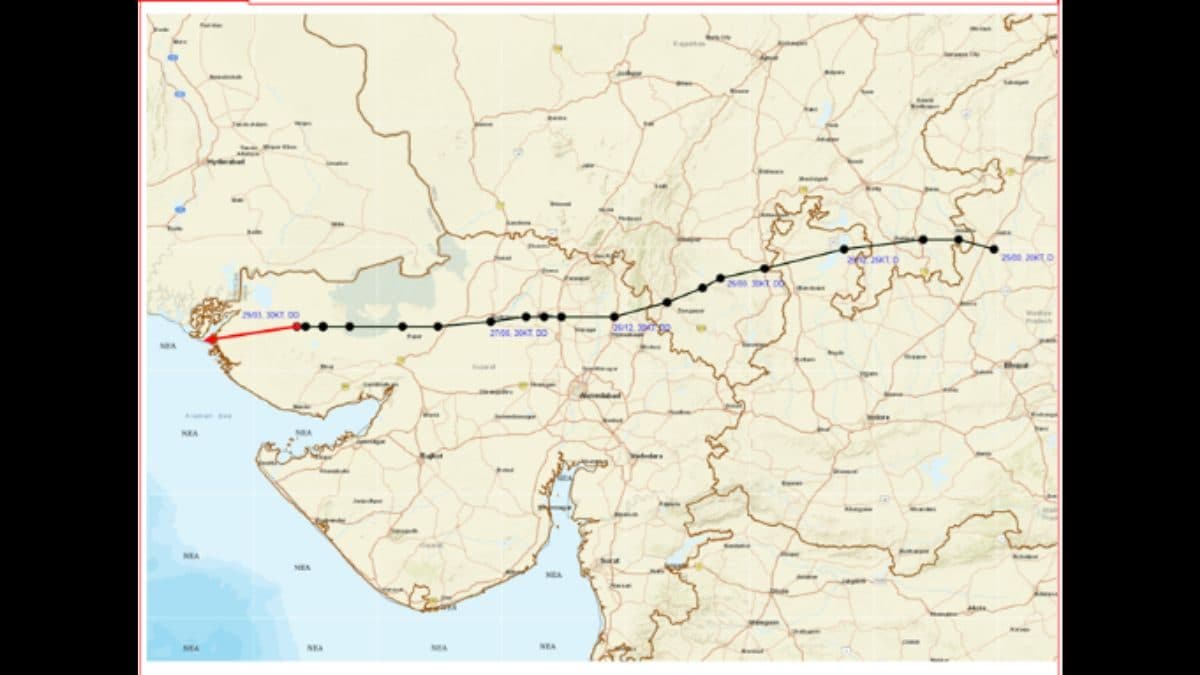Gujarat, already reeling from heavy monsoon rains, is bracing for an unusual event: the formation of a cyclone in the Arabian Sea during the monsoon season. While cyclones are typically associated with the pre-monsoon and post-monsoon periods, this rare occurrence has caught the attention of meteorologists.
A Rare Occurrence: Cyclone Formation During Monsoon Season
Tropical cyclones are typically born during the pre-monsoon (March-April-May) and post-monsoon (October-November-December) seasons when atmospheric conditions are favorable. However, the formation of a cyclone during the monsoon season (June-September) is unusual.
The Role of Moisture and Instability
While rare, cyclones can form during the monsoon season due to a convergence of factors. The current cyclonic disturbance in the Arabian Sea was fueled by high moisture incursion from the Arabian Sea, contributing to atmospheric instability.
The Evolution of the Cyclone
This cyclone has been forming gradually, progressing from a ‘low pressure area’ to a ‘well-marked’ depression, and finally into a ‘deep depression’ as it moved westward towards Rajasthan and Gujarat. These stages represent the intensification of the cyclone, with increasing wind speeds.
Impact and Forecast
The formation of a cyclone during monsoon season is likely to have a significant impact on the already flood-affected Gujarat. The state has already received torrential rainfall, with some areas experiencing record-breaking precipitation.
Heavy Rainfall and Strong Winds
The cyclone is expected to intensify into a Cyclonic Storm by August 30th. The weather department has issued warnings for strong winds gusting to 60 kmph along the coastal regions of Gujarat, Maharashtra, and Saurashtra. The strong winds could lead to disruption in power supply, damage to infrastructure, and increased flood risks.
Moving Away From the Coast
Although the cyclone is expected to intensify, it will not make landfall. It is projected to move west-south-westwards into the northeast Arabian Sea, eventually dissipating over the sea. This means the direct impact of the cyclone on Gujarat’s coastal areas will be limited.
Concurrent Developments in the Bay of Bengal
The formation of the cyclone in the Arabian Sea is coinciding with another weather system forming in the Bay of Bengal. Another low-pressure area is expected to intensify and move towards the Andhra Pradesh and Odisha coasts, bringing potential for further rainfall in the coming days.
A Season of Heavy Rainfall
Despite the unusual cyclone, the overall monsoon rainfall across India remains above the long-period average. Several regions, particularly the Saurashtra region, have received well above-average rainfall, leading to floods and waterlogging.
Forecast for Upcoming Days
The monsoon trough remains active, with the weather department forecasting widespread rains over northwest, central, and western parts of India in the next few days. Gujarat is also expected to experience heavy rainfall, with some areas potentially experiencing isolated extremely heavy rainfall.
Take Away Points
- The formation of a cyclone in the Arabian Sea during the monsoon season is a rare event, highlighting the unpredictable nature of weather patterns.
- This cyclone, though unusual, is expected to move away from the Indian coast and dissipate over the Arabian Sea.
- However, the cyclone and other monsoon systems are expected to bring continued rainfall and strong winds in Gujarat and other parts of India, raising concerns for further floods and potential damage.
- The impact of these weather systems highlights the importance of robust disaster preparedness and efficient flood management strategies.









